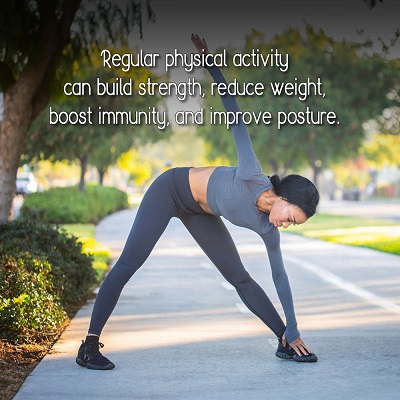 There are several benefits to working out, we all know that. Regular physical activity can build strength, boost immunity, improve posture, and can also lead to weight loss, which further lowers the risk for chronic illnesses and disease.
There are several benefits to working out, we all know that. Regular physical activity can build strength, boost immunity, improve posture, and can also lead to weight loss, which further lowers the risk for chronic illnesses and disease.
However, regular exercise employing the same repeated workout can lead to what fitness experts call the workout plateau. A workout plateau happens when our body gets used to the rigor of the workout and could signal that you need to up the intensity level of your exercise routine.
Changing up your workout and gradually increasing the intensity is the key to seeing results consistently. A good intense workout is one that uses your whole body and keeps your heart rate at 70% of your maximum recommended rate for your age. For comparison, a moderate workout may only register about 50-60% maximum heart rate.
This simply means that an intense workout is one that would be difficult for you to carry on a conversation without having to catch your breath.
High-Intensity Interval Training (HIIT)
You may have heard of the term HIIT being used by several fitness gurus nowadays. HIIT is more than just a string of letters. It refers to an intense type of workout that incorporates high-intensity exercises like doing sprints and jumps or even running or cycling with very short rests in between.
Typically, a HIIT workout will require you to perform at a maximum energy level and do an active rest afterward. While in the active rest phase, you do lower-intensity moves like walking or swaying your arms to keep your heart raised but not extended.
The work-rest-work pattern is what makes HIIT a hit among fitness enthusiasts. Not only do you maximize your calorie burn while on HIIT, but you also continue to burn calories after you work out. HIIT workouts can also be incorporated with weights and resistance bands to further build muscle, which can help in burning more calories even when you’re done with the exercise. A 20-minute HIIT workout trumps running at a steady pace for an hour in terms of caloric expenditure, meaning you burn more calories in a shorter amount of time.
If you are looking into doing HIIT workouts as a way to challenge yourself, it is important to keep in mind that these exercises are intended to be performed at a maximum energy level, so be prepared to sweat. For those who are new to exercising or for people with heart conditions, it is best to consult your doctor first before going into any type of exercise routine, but especially one involving extreme exertion.
HIIT for Beginners
Called the Timmons method, this entry-level HIIT workout consists of 20 seconds of intense work followed by active recovery for two minutes. While in active recovery, you can do low-intensity moves or continue running or cycling at a less intense rate. If active recovery is too much for you at this point, you can do a complete rest for two minutes, instead. Do the entire circuit three times.
HIIT for Intermediate Level
If you have been exercising regularly, you can double the amount of work (40 seconds) and cut the active rest period in half. You can perform the entire routine six to eight times.
HIIT for Advanced Level
To really amp up your exercise, advanced HIIT requires you to work at different levels or blocks. You’ll start with 30 seconds of exercise at 30% intensity, followed by 20 seconds at 60% intensity, and ends with 10 seconds going at maximum intensity.
Some Precautions Before Exercising
HIIT exercises require you to perform at a maximum intensity level to be highly effective. Loads of energy is needed for you to successfully finish one HIIT routine. For days when you feel you lack energy, you can probably skip HIIT and substitute with a lower-intensity routine.
Recovery days are also vital in HIIT. While doing HIIT exercises every day can help you lose weight faster, it can also make you lose muscle mass. Allow yourself to recover from HIIT by doing low-intensity workouts or by only lifting weights for that session. By doing so, you are not just losing fat, you’re building muscle, as well.
High-intensity Interval Training is an intense type of workout that can truly challenge even the fittest and the strongest. It is an effective way to lose fat and helps you fight off life-threatening illnesses. HIIT exercises are also versatile and can be done in the gym, at home, or with running or cycling. Don’t let its name intimidate you, HIIT can be adapted even for beginners. So go ahead, challenge yourself and do a HIIT workout today!






